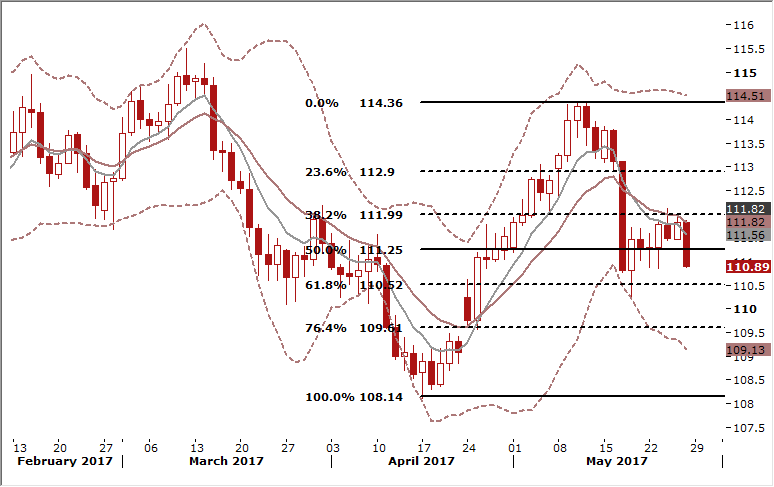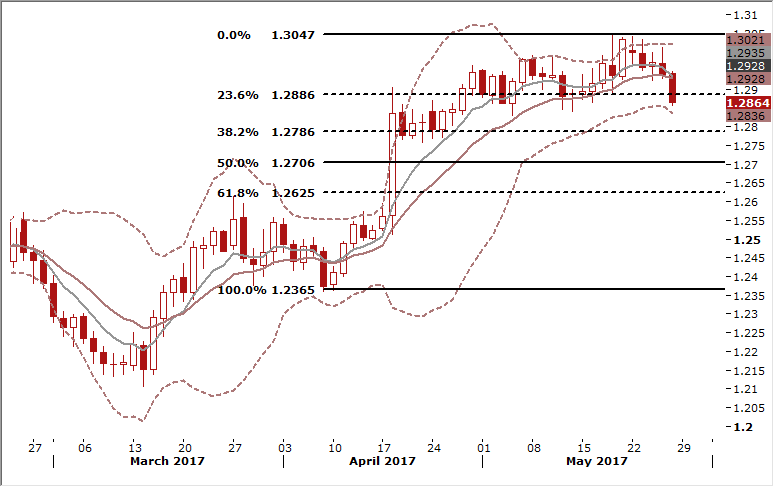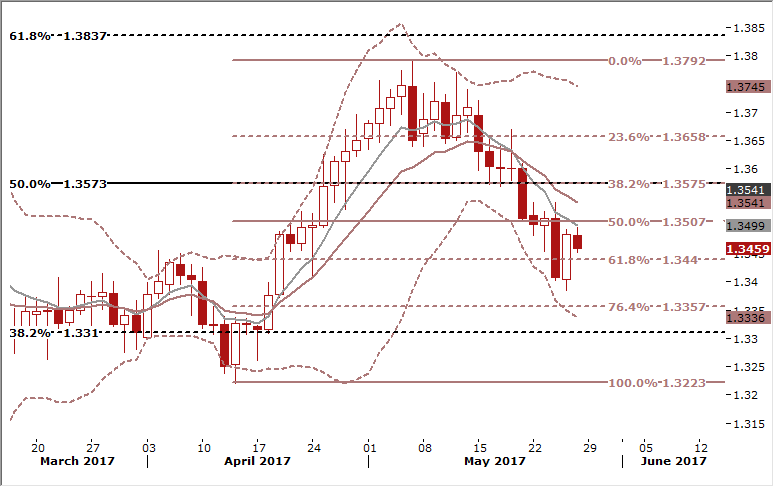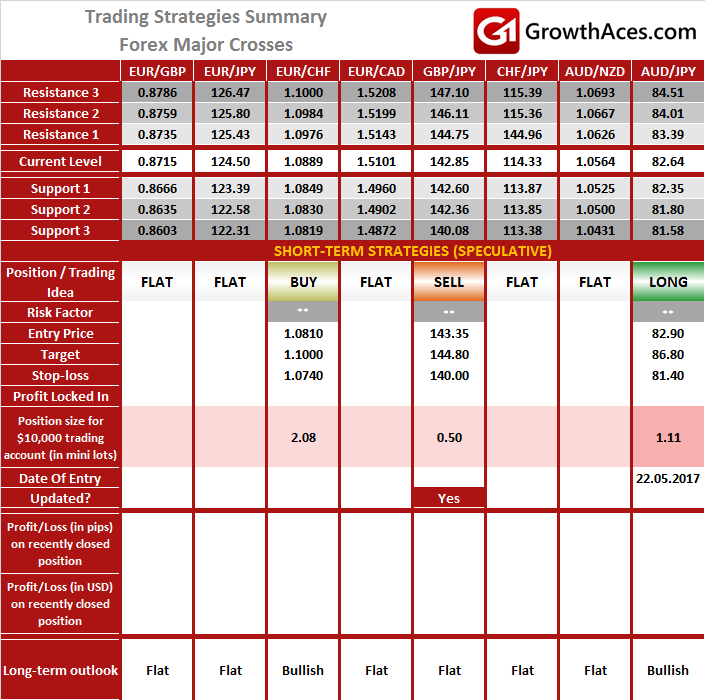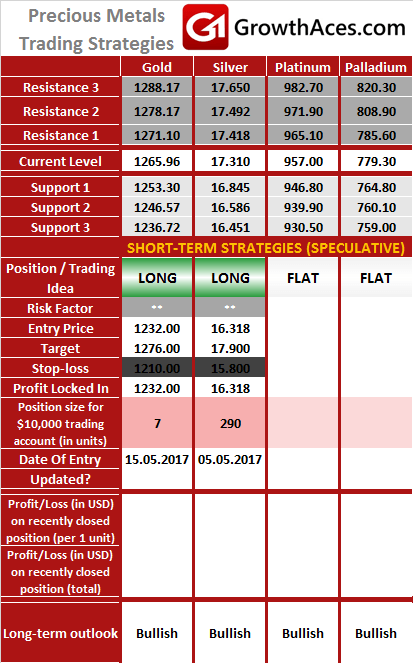Macroeconomic overview: St. Louis Federal Reserve President James Bullard said the current level of U.S. prices is noticeably lower than what it would be if the Federal Reserve had delivered on its 2% inflation target. The U.S. central banker said U.S. prices are now 4.6% below the price level path established from 1995 to 2012, when inflation was growing near the Fed's target of 2% each year. Bullard said that a surge in inflation is unlikely even if unemployment falls further.
Bullard also said he sees minimal impact on long-term bond yields from reductions in the Fed's balance sheet, which he hopes will start in the second half of this year.
The Fed is expected to raise rates at its June policy-setting meeting, and will release fresh economic projections at that time.
Bullard, who regards the economy as mired in a low-inflation, low-growth rut, has said he feels the central bank needs to raise rates only one more time and should then pause until it is clear the economy has shifted to a higher gear.
San Francisco Federal Reserve President John Williams said he is spending more time thinking about how fiscal policies under U.S. President Donald Trump could impact the economy, and so far he sees small short-term gains and little for the longer term.
With U.S. unemployment at 4.4% and job creation nearly twice what is needed to provide jobs for new entrants to the workforce, the economy is running "somewhat hot," Williams said. The best way to sustain the economy's momentum, he said, is to slow the economy a bit by gradually raising rates.
But because inflation remains below the Fed's 2% target, and has softened lately, there is no pressure to do more than the two further rate hikes this year that he and most other Fed officials expect, he added.
Federal Reserve Governor Lael Brainard said that a brighter global economy is posing less risk to the Fed's outlook for the U.S. Her comments add to the signal the Fed sent in minutes released this week that the central bank is likely to move forward with an expected rate increase in June.
Japan's core consumer prices rose 0.3% in April from a year earlier, below market median estimate for a 0.4% annual gain. But core consumer prices in Tokyo, available a month before the nationwide data, rose 0.1% in May from a year earlier, versus a 0.0% annual rise seen by the market.
Technical analysis: Bulls managed to break the daily cloud top and tenkan line this week, but failed to register any daily closes above. Today’s fall below 111.00 revives the bearish outlook. The nearest resistance level is May 23 low at 110.87. We think that a downward move is likely to be continued next week.
Short-term signal: We got short at 110.98 today. The target is 109.30.
Long-term outlook: Flat
GBP/USD: Bearish bias strengthens as Conservative lead shrinks
Macroeconomic overview: Sterling fell to a two-week low on Friday after a poll showed a narrowing lead for British Prime Minister Theresa May over her opposition ahead of elections next month.
May called the snap election to strengthen her hand in negotiations on Britain's exit from the European Union and to win more time to deal with the impact of the divorce.
If she does not handsomely beat the 12-seat majority her predecessor David Cameron won in 2015, her electoral gamble will have failed. When she called the election, polls showed she was as much as 23 percentage points ahead.
In the first opinion poll to be published since Monday's suicide bombing in Manchester, the lead of May's Conservatives dropped to 5 percentage points from 9 points on Saturday and 18 points two weeks ago.
The Conservatives saw their support fall to 43% from 44%, while the opposition Labour Party increased support to 38% from 35%, the YouGov poll carried out on May 24-25 showed.
Such a level of support, if it was replicated across the country in a uniform way on June 8, would cut May's majority to two from the working majority of 17 she currently has.
Technical analysis: The GBP/USD fell below 23.6% fibo of April-May rise today and a close below this level would be an important bearish signal. The 7-day exponential moving average is negatively aligned and is going to cross the 14-day ema, which highlight short-term bearish momentum.
Short-term signal: We got short at 1.2942 in yesterday’s Trading Strategies Summary. The target of our position is 1.2750. We have lowered trailing stop-loss to the entry level.
Long-term outlook: Bullish
USD/CAD: Loonie weakend on disappointment after OPEC decision
Macroeconomic overview: OPEC and non-members led by Russia decided to extend cuts in oil output by nine months to March 2018. Oil prices dropped as the market had been hoping oil producers could reach a last-minute deal to deepen the cuts or extend them further, until mid-2018.
In December, the OPEC agreed its first production curbs in a decade and the first joint cuts with 11 non-OPEC producer nations, led by Russia, in 15 years. The two sides decided to remove about 1.8 million barrels per day from the market in the first half of 2017 - equal to 2% of global production, taking October 2016 as the baseline month for reductions.
Saudi Energy Minister Khalid al-Falih said: "We considered various scenarios, from six to twelve months, and we even considered options for a higher cut. But all indications discovered that a nine-month extension is the optimum." He said he was not worried by what he called Thursday's "technical" oil price drop and was confident prices would recover as global inventories shrink, including because of declining Saudi exports to the United States.
The Canadian dollar weakened against its U.S. counterpart on Thursday, pulling back from a five-week high as oil prices sunk on disappointment that an OPEC-led extension of production cuts did not go further.
With the OPEC deal out of the way, attention would turn back to interest rate differentials.
The gap between Canada's two-year yield and its U.S. equivalent narrowed by 1 basis points to a spread of -58 basis points, near its smallest gap since May 1. Shorter-dated Canadian bonds have increasingly underperformed since Wednesday's rate decision by the Bank of Canada.
While holding rates steady, the Canadian central bank was more upbeat about the economy than some investors had expected, dropping a reference to the excess capacity in the economy being "material" and noting strong spending by Canadians along with a housing boom and job growth.
Dallas Federal Reserve Bank President Robert Kaplan said late on Wednesday that he felt "very strongly" that U.S. trade relationships with Canada and Mexico help U.S. competitiveness. The remarks came as U.S. President Donald Trump looks at renegotiating the North American Free Trade Agreement.
Technical analysis: The USD/CAD recovered yesterday, but the rebound was stopped by the falling 7-day exponential moving average. The pair is still below 50% fibo of April-May rise, which is an important resistance now. We think that further downward move is likely in the coming sessions and are looking to sell this pair on upticks.
Short-term signal: Strong drop in oil prices on Thursday made us raise USD/CAD sell order to 1.3570.
Long-term outlook: Flat
TRADING STRATEGIES SUMMARY:
FOREX - MAJOR PAIRS:
FOREX - MAJOR CROSSES:
PRECIOUS METALS:
How to read these tables?
1. Support/Resistance - three closest important support/resistance levels
2. Position/Trading Idea:
BUY/SELL - It means we are looking to open LONG/SHORT position at the Entry Price. If the order is filled we will set the suggested Target and Stop-loss level.
LONG/SHORT - It means we have already taken this position at the Entry Price and expect the rate to go up/down to the Target level.
3. Stop-Loss/Profit Locked In - Sometimes we move the stop-loss level above (in case of LONG) or below (in case of SHORT) the Entry price. This means that we have locked in profit on this position.
4. Risk Factor - green "*" means high level of confidence (low level of uncertainty), grey "**" means medium level of confidence, red "***" means low level of confidence (high level of uncertainty)
5. Position Size (forex)- position size suggested for a USD 10,000 trading account in mini lots. You can calculate your position size as follows: (your account size in USD / USD 10,000) * (our position size). You should always round the result down. For example, if the result was 2.671, your position size should be 2 mini lots. This would be a great tool for your risk management!
Position size (precious metals) - position size suggested for a USD 10,000 trading account in units. You can calculate your position size as follows: (your account size in USD / USD 10,000) * (our position size).
6. Profit/Loss on recently closed position (forex) - is the amount of pips we have earned/lost on recently closed position. The amount in USD is calculated on the assumption of suggested position size for USD 10,000 trading account.
Profit/Loss on recently closed position (precious metals) - is profit/loss we have earned/lost per unit on recently closed position. The amount in USD is calculated on the assumption of suggested position size for USD 10,000 trading account.
Our research is based on information obtained from or are based upon public information sources. We consider them to be reliable but we assume no liability of their completeness and accuracy. All analyses and opinions found in our reports are the independent judgment of their authors at the time of writing. The opinions are for information purposes only and are neither an offer nor a recommendation to purchase or sell securities. By reading our research you fully agree we are not liable for any decisions you make regarding any information provided in our reports. Investing, trading and speculation in any financial markets may involve high risk of loss. We strongly advise you to contact a certified investment advisor and we encourage you to do your own research before making any investment decision.
Recommended Content
Editors’ Picks
EUR/USD edges lower toward 1.0700 post-US PCE

EUR/USD stays under modest bearish pressure but manages to hold above 1.0700 in the American session on Friday. The US Dollar (USD) gathers strength against its rivals after the stronger-than-forecast PCE inflation data, not allowing the pair to gain traction.
GBP/USD retreats to 1.2500 on renewed USD strength

GBP/USD lost its traction and turned negative on the day near 1.2500. Following the stronger-than-expected PCE inflation readings from the US, the USD stays resilient and makes it difficult for the pair to gather recovery momentum.
Gold struggles to hold above $2,350 following US inflation

Gold turned south and declined toward $2,340, erasing a large portion of its daily gains, as the USD benefited from PCE inflation data. The benchmark 10-year US yield, however, stays in negative territory and helps XAU/USD limit its losses.
Bitcoin Weekly Forecast: BTC’s next breakout could propel it to $80,000 Premium

Bitcoin’s recent price consolidation could be nearing its end as technical indicators and on-chain metrics suggest a potential upward breakout. However, this move would not be straightforward and could punish impatient investors.
Week ahead – Hawkish risk as Fed and NFP on tap, Eurozone data eyed too

Fed meets on Wednesday as US inflation stays elevated. Will Friday’s jobs report bring relief or more angst for the markets? Eurozone flash GDP and CPI numbers in focus for the Euro.
